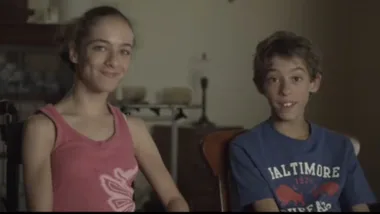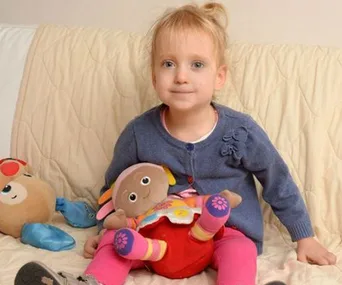Four-year-olds Louie Elbourne and his twin sister Ava were both born with cerebral palsy – a blanket term for a series of disorders that affect a person’s ability to move.
Born nine weeks’ premature, Ava and Louie were shortly diagnosed with different severities of the condition; Ava suffers from Diplegic Cerebral Palsy, which affects both her lower limbs, while Louie has Quadriplegic Cerebral Palsy, impacting both his upper and lower limbs.
Louie also has epilepsy.
In January this year, Ava was included in a life-changing trial, sponsored by the NHS, that saw her become one of the first children in the UK to have cerebral palsy surgery.
Sadly, Louie was denied the same treatment.
“Louie was declined as he didn’t meet the NHS Criteria,” the twins’ parents, Emma and Phil Elbourne, wrote on their website, Louie and Ava’s Dream.
“It was such a horrible but fantastic day, given the news that your daughter has been accepted for this life changing operation, but not your son.”
The devoted parents then went on to fundraise almost $115,000 ($70,000GBP) for their son’s surgery at a private hospital in the U.S.
The result? Louie has started walking just two weeks after his life-altering operation.
WATCH Louie walking in the video below. Post continues…
“Although the operation was to remove the stiffness and spasticity in his legs, we’ve noticed a change in his hands as well,” doting dad, Phil, tells ITV News.
“He’s having to think less about his legs now so he’s been able to do more.”
“We think his speech has come along, and he just seems more happy and content in himself, which is just completely and utterly life-changing for us.”
“Just to see the potential that he’s got really brings a tear to our eye every day.”
Louie working hard during his post-operation physical therapy session.
Louie’s progress, and noticeably happier demeanour, has everyone smiling.
Cerebral palsy, in its varied forms, is typically brought on following damage to a child’s developing brain during pregnancy, or shortly after a baby is born.
According to Australia’s Cerebral Palsy Alliance, this life-long condition can impact the way someone’s body moves, their reflexes, posture, and muscle tone, control and coordination.
Also, it’s not uncommon for people who have cerebral palsy to have learning difficulties, hearing, speech and visual impairments, and, in some cases, epilepsy.
And these cognitive conditions can worsen over time.
What cerebral palsy signs to look out for
A baby prefers to use one side of its body more than the other
They feel “floppy” when you pick him/her up due to low muscle tone
They have poor muscle control, reflexes and posture
They experience muscle spasms and stiffness
They struggle to swallow or have difficulty eating
They can’t sit up roll over by themselves after six months
While not all signs of cerebral palsy can be identified at birth. If your child hasn’t started walking between 12 and 18 months, and they aren’t able to speak somewhat coherently by 24 months, this can indicate some form of cerebral palsy.
If you want to learn more about cerebral palsy, or would like your child to be tested, contact your local GP.
Sweet siblings, Louie and Ava, standing tall.



